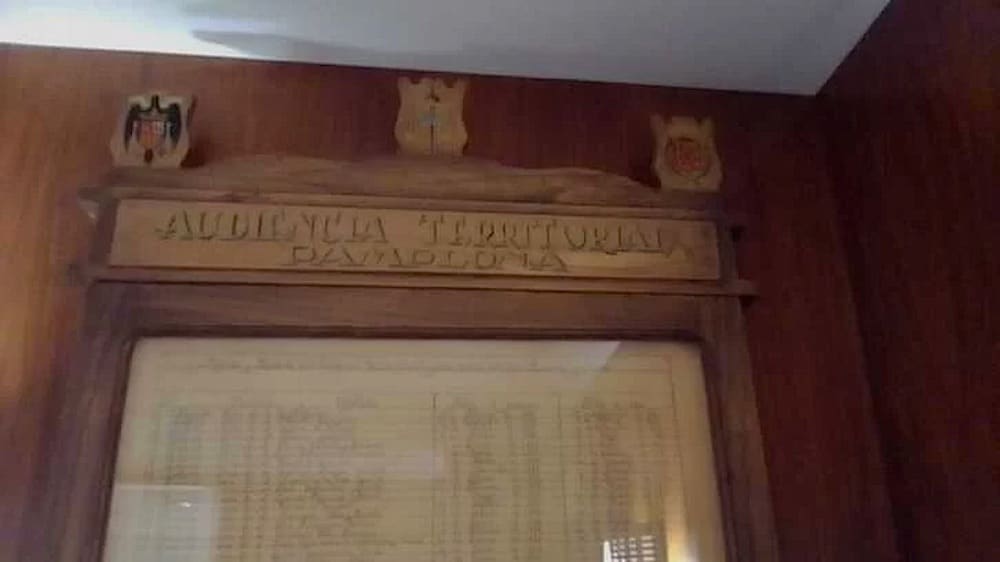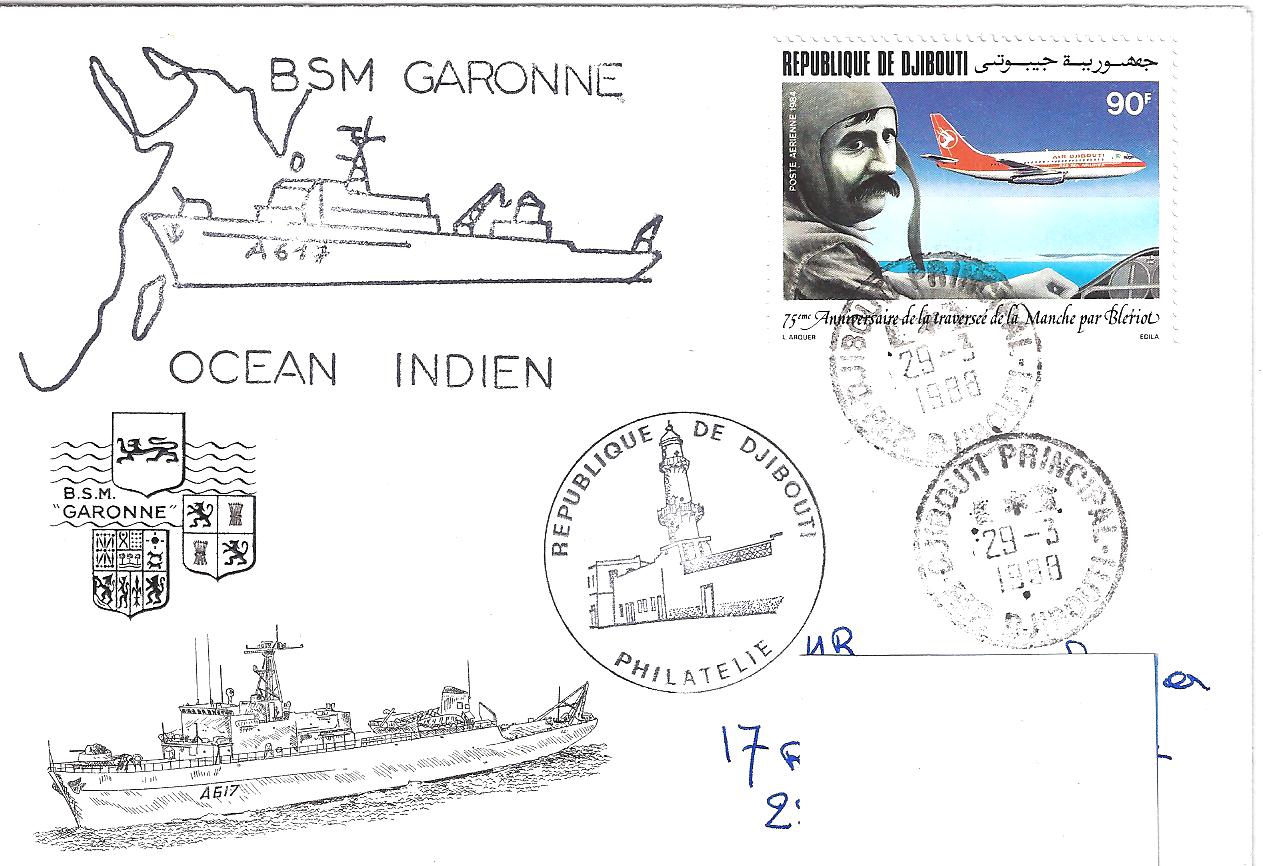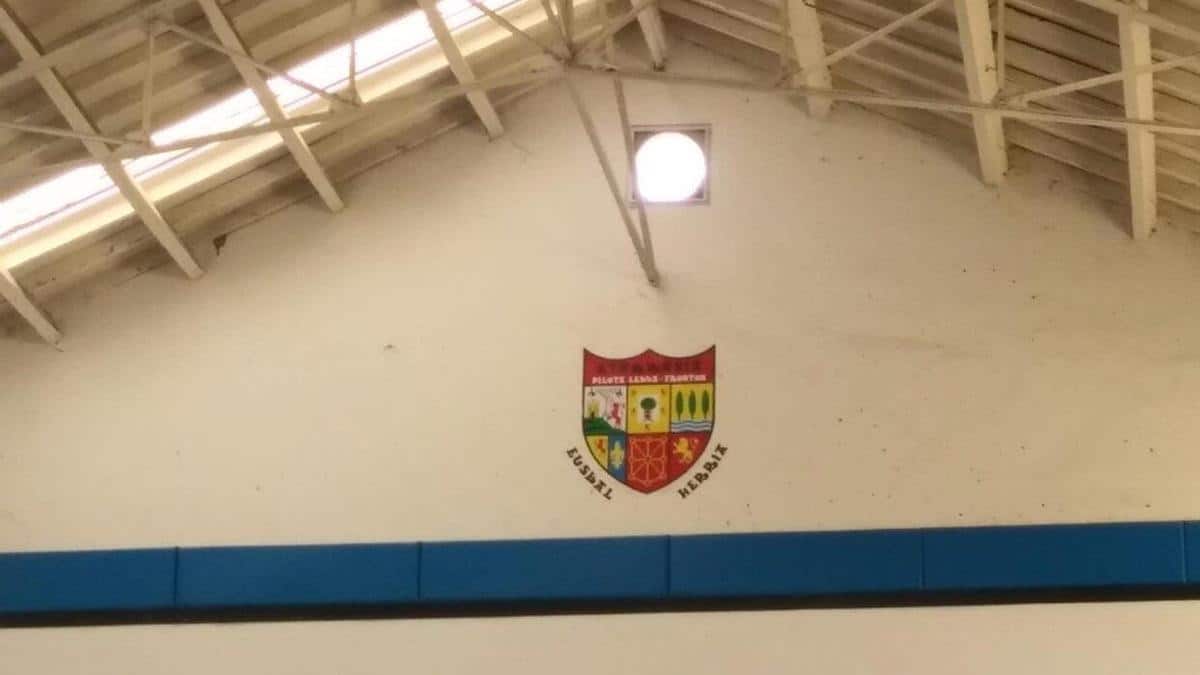There is a concept that has always grabbed our attention, called “New Christian,” which, in addition to the harsh and terrible historical reality hidden behind those words, is a meaning which, for our thoughts today, regarding what happened in Navarre with the Zazpiak Bat that was painted on the Villava-Atarrabia frontón is right on the nose.
The story, which you can learn more about in the Noticias de Navarra article we’ve linked to below, seemed to us to be so severe, so outrageous, that we had simply had to write one of those articles that breaks our rule about “what the world thinks of the Basques” and cover our indignation at what we read in the local press.
To make a long story short, the Administrative Chamber of the Supreme Court of Navarre has ratified that the Zazpiak Bat coat of arms that is painted on the wall of this city’s frontón must be painted over, because its presence proves a position in favor of a certain political position that violates the public authorities’ duty for neutrality.
This surprises us, because they never had a problem living with the symbols left over from the Franco dictatorship that “graced” the Courthouse where the offices of the leading magistrates were located, including the President, the Secretary of the Government, and the Social and Civil Courts after they were remodeled in 2010. As the Naiz newspaper stated, “The Courthouse is a modern building (erected in 1996), and the panel had to be moved from its former location. The work is given the title “National Chamber of Pamplona,” which was its name before it was titled “Supreme Court of Navarre.”


Upon reading all this, we recalled one of the more popular definitions of that term, “New Christian.” It reflects the idea that those who’ve most recently converted are sometimes the most intransigent and radical when it comes to applying the religion they’ve adopted. That way, no one doubts they’re “true believers.”
In this case, though, we’re not dealing with any newly-coverted people, but rather a centralizing and monotonous concept of State, the Jacobin. So, in order to show off what good Jacobins they are, they always fight to go beyond their teachers, the French unitary republicans.
We don’t know if this court has ever had a position that wasn’t in favor of a certain political position, which therefore violates the principle of neutrality that must be demanded of all political powers like these.
They forget that, by definition, most of the political powers’ acts are determined by political positions, from the definition of where the funds in the General Budget are to go to, to the use of the budget to finance the fiestas in any small town in the country. We also have the court sentences that are not neutral, because, among other reasons, the laws, as well as the people who write and interpret them, are not neutral, either. This can be seen in this sentence, which as a profound political and ideological load.
Why do we say that the students are trying so hard to go beyond their teachers in order to prove that they have “converted” to the Jacobine “faith”?
Because of many things that we’ve been blogging about over the years, all of which can help us understand this sentence better.
The birth of “Zazpiak Bat”
To start with, the Zazpiak Bat was born in the Northern Basque Country at the end of the 19th century, before the Basque nationalist movement had really gotten off the ground. You can read more about it here:
The Pioneers of the “Basque Renaissance” in the Northern Basque Country
This coat of arms was created to represent the whole of the Basque Country, a cultural, historical, and linguistic concept that had existed in Basque society for centuries. It far predates the Napoleonic Code and the French administrative structures that were copied by the (so-called) “liberals” who created the Spanish State starting in 1812.
Just like the Northern Basques did not resign themselves to the loss of their liberties which were being stolen by the Jacobins, the Southern Basques also put up a fight. But that’s a story that goes far beyond Zazpiak Bat.
A Zazpiak Bat on a French warship
Why are we so sure of that? Because that what the French authorities themselves have shown us; specifically, in the French navy. If the Zazpiak Bat exclusively had the meaning that so worries the Navarrese court, it would not have been possible for a French warship to carry it as a symbol.
We’re referring to the BSM Garonne, a French logistical support ship that was put into service in 1965 and which was sunk 100 km (60 mi) off the island of Réunion on October 9, 2003.

This ship’s colors and tampion were the coats of arms of Guyenne, an old region in France with its capital at Bordeaux, Gascony, and, surprise, surprise, the Zazpiak Bat with its six quarterings representing Navarre, Gipuzkoa, Biscay, Alava, Labourd, and Soule.
So you can see, what was to the Jacobin students a “positioning in favor of a certain political position that violates the principle of neutrality that should be demanded of public authorities” is, for the French navy, and thereby the French government, a way to represent one part of their Republic, the one made up by the Basques.
This is a part of our country where, let’s not forget, part of Navarre is also located. Because Navarre as a whole is more than just the autonomous community of Navarre represented by this court.


At the time, when we discovered this, we wrote an article with a title in which we tried to be a bit ironic about these absurd situations that are created in this kingdom of “new Christians.”
Might France have its eyes set on the territory of the Southern Basque Country?
We’ll leave you with the Noticias de Navarra article about this sentence, and some information from Naiz which reports on the presence of Francoist symbols. There are rules that must be followed (like the removal of such symbols), because rules are rules. We’re sorry for the residents of Villava-Atarrabia.
Noticias de Navarra – 5/3/2024 – Basque Country
El TSJ de Navarra obliga a Villava-Atarrabia a borrar el escudo del frontón que contiene siete provincias con el término ‘Euskal Herria’
El Tribunal Superior de Justicia de Navarra (TSJN) ha confirmado la sentencia que consideró que la colocación en el frontón municipal de Villava de un escudo con siete provincias y el término ‘Euskal Herria’ es “una manifestación como posicionamiento en favor de una determinada posición política que supone la vulneración del deber de neutralidad política que resulta exigible a los poderes públicos”. UPN fue el partido que denunció el caso y lo llevó a sede judicial.
(Follow) (Automatic translation)
Naiz – 28-2-2024 – Basque Country
Aparece simbología franquista en la planta del Palacio de Justicia navarro destinada a jueces
Un cartel coronado con el águila de San Juan y el escudo navarro con la laureada ha sido descubierta en la planta noble del Palacio de Justicia, según ha indicado EH Bildu en una pregunta al Gobierno navarro. Esta simbología se halla a la vista de los jueces con cargos de responsabilidad.
(Follow) (Automatic translation)
Last Updated on May 17, 2024 by About Basque Country





























